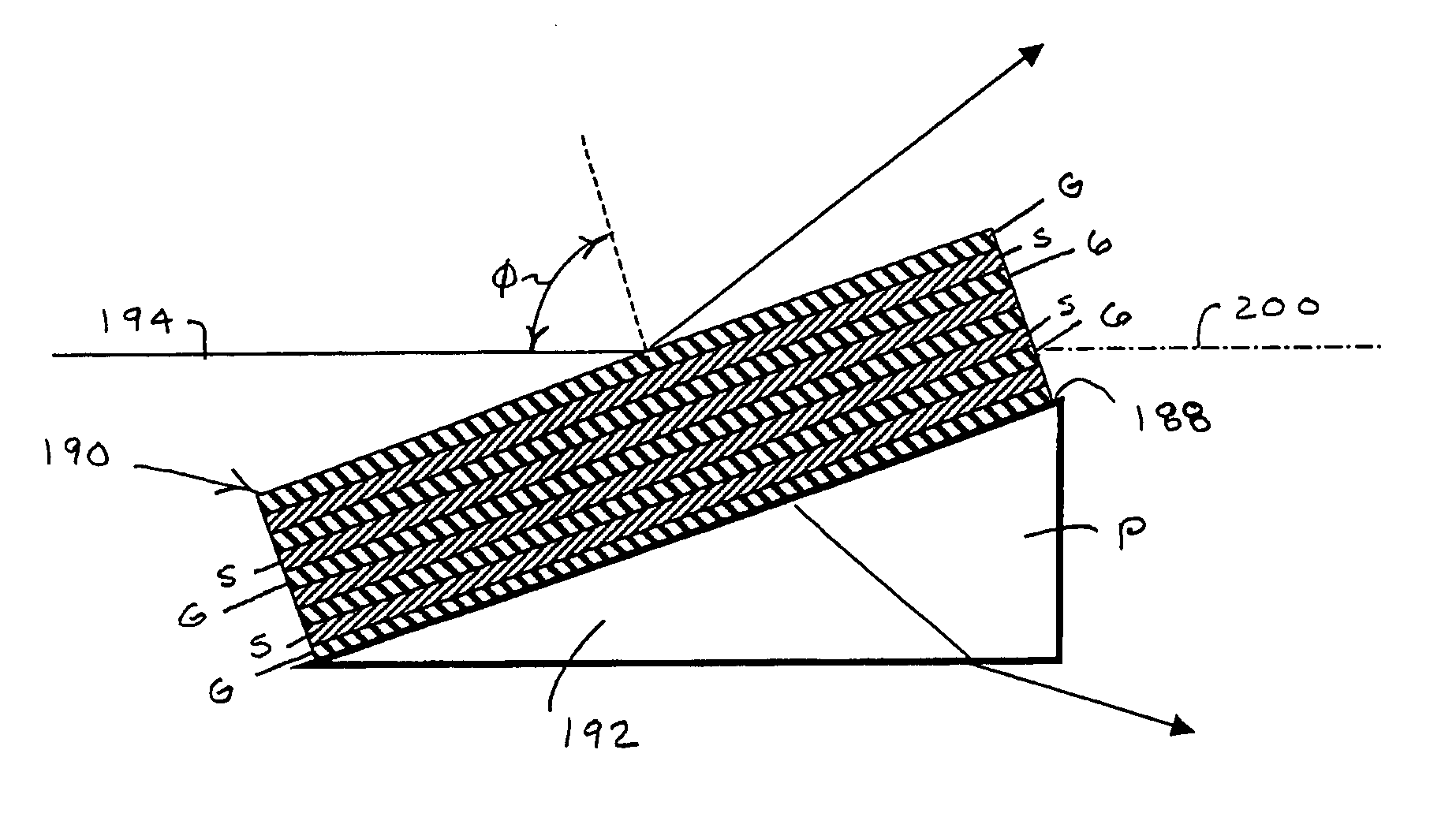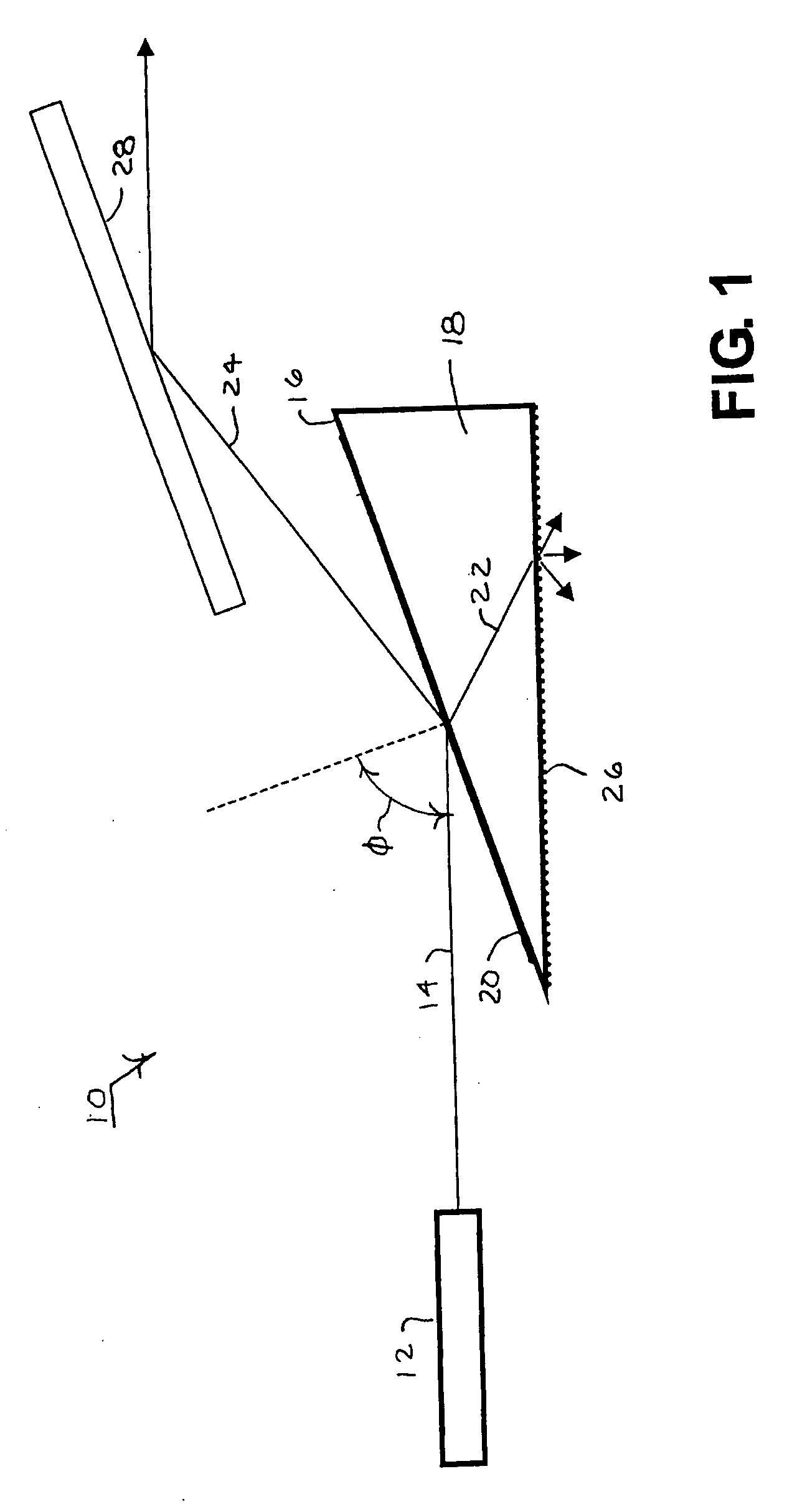Polarizer for high-power deep UV radiation
- Summary
- Abstract
- Description
- Claims
- Application Information
AI Technical Summary
Benefits of technology
Problems solved by technology
Method used
Image
Examples
Embodiment Construction
[0035] A polarizing system 10 is shown in FIG. 1 of the type that can be used for the practice of the present invention includes a laser light source 12, such as an excimer laser, that emits a collimated beam of unpolarized light 14 having a nominal wavelength less than 250 nm (e.g., 193 nm or 157 nm) and a power density greater than 5 milli-joules per square centimeter per pulse. Such an unpolarized beam 14 is not limited to randomly polarized light but also includes insufficiently or inappropriately polarized light. The collimated beam 14 approaches a leading surface 16 of a prism 18 at an incidence angle φ between 65° and 75°. As unpolarized light, the incident beam 14 includes both P polarization components that oscillate in the plane of incidence (i.e., the plane of FIG. 1) and S polarization components that oscillate normal to the plane of incidence.
[0036] An antireflective coating 20 is applied to the leading surface 16 of the prism 18 to differentially affect orthogonally r...
PUM
 Login to View More
Login to View More Abstract
Description
Claims
Application Information
 Login to View More
Login to View More - R&D
- Intellectual Property
- Life Sciences
- Materials
- Tech Scout
- Unparalleled Data Quality
- Higher Quality Content
- 60% Fewer Hallucinations
Browse by: Latest US Patents, China's latest patents, Technical Efficacy Thesaurus, Application Domain, Technology Topic, Popular Technical Reports.
© 2025 PatSnap. All rights reserved.Legal|Privacy policy|Modern Slavery Act Transparency Statement|Sitemap|About US| Contact US: help@patsnap.com



